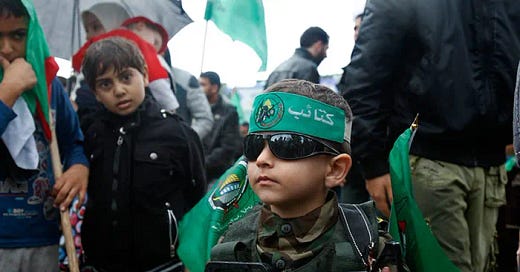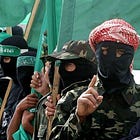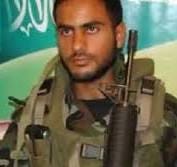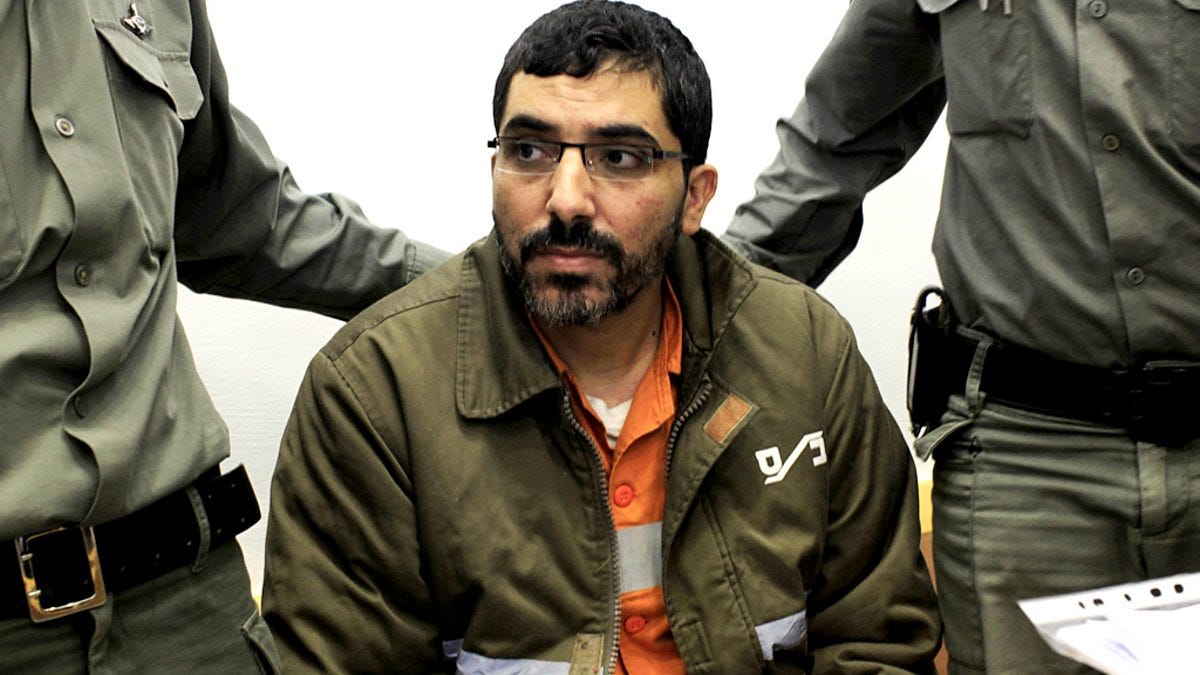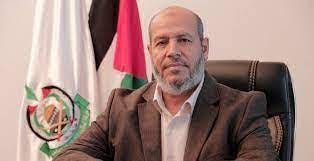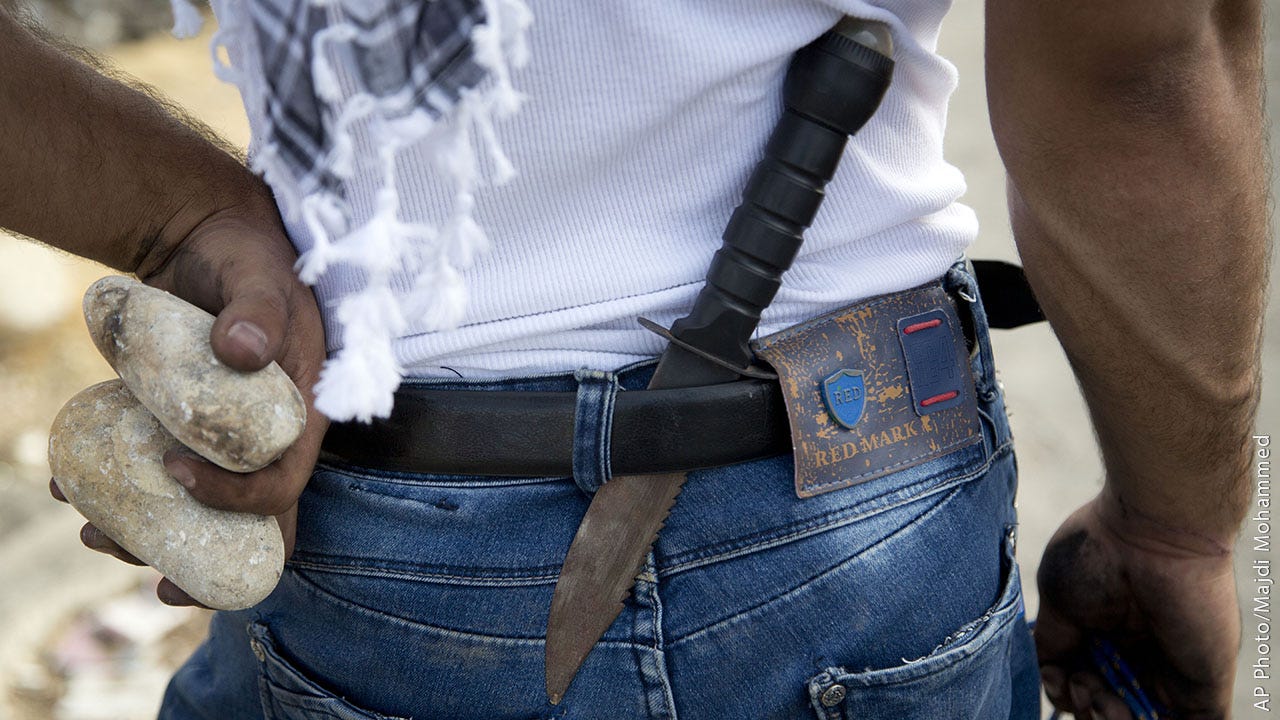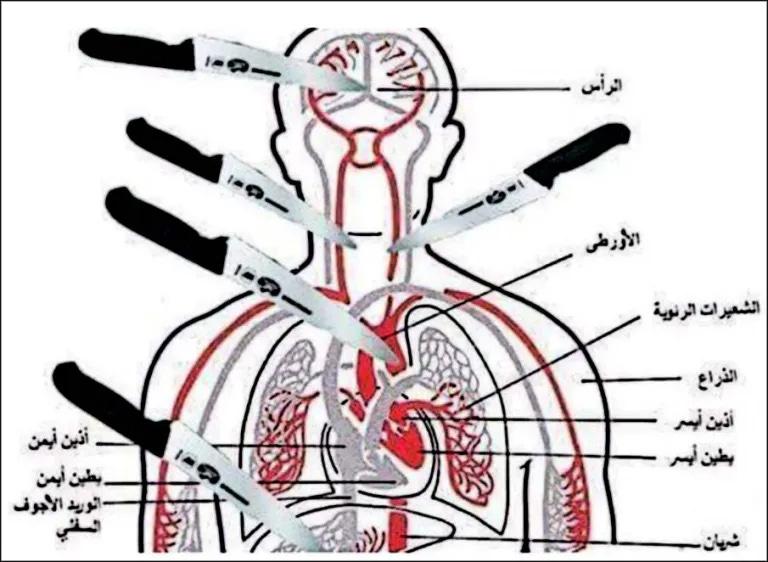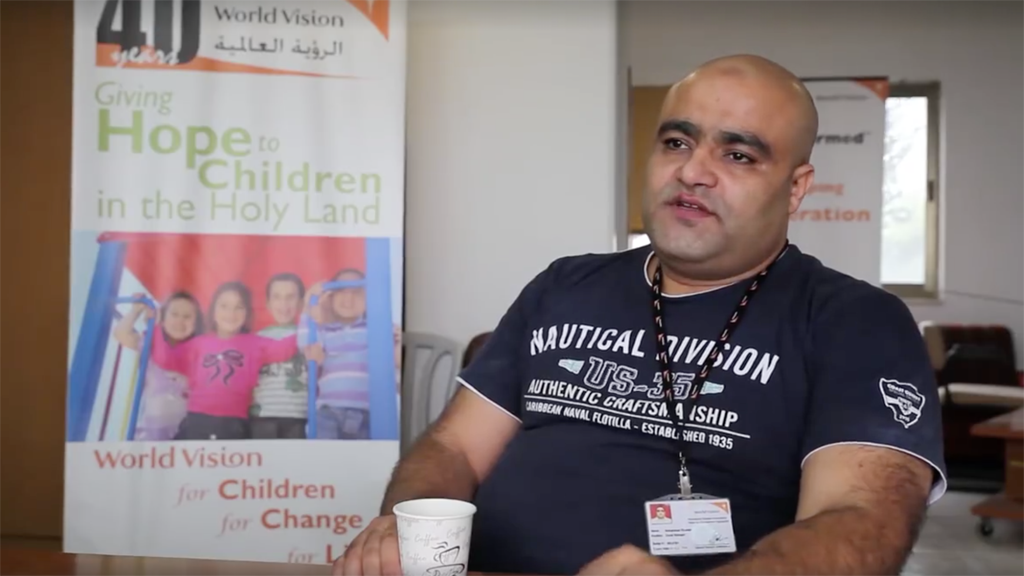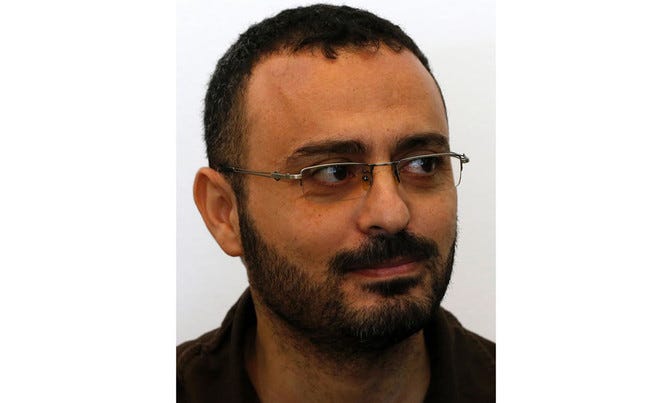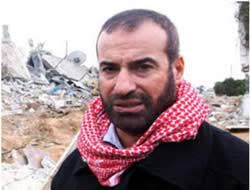In last week's episode, I covered 2010 to 2014. Today I will cover the busy period between 2015 and 2016. Click below to read it.
2015
For Fiscal Year 2015 the United States slashed aid to the Palestinian Authority by $80 million, because of the continuing violent incitement by Palestinian leaders. This represented a 22% cut from the State Department’s initial budget request.
On January 19, 2015, the European Union announced that it would appeal the ruling handed down in 2014 by the European Union court that removed the terrorist label from Hamas. According to court documents, the European Union must provide evidence that Hamas remains a terrorist group but they cannot use third-party sources from the internet (i.e. Wikipedia etc.), to do so.
On February 12, 2015, after conducting multiple attacks inside Egypt in late 2014 and January 2015, an Egyptian court designated the Izz al-Din al-Qassam Brigades, a terrorist organization. The group was accused of financing, planning, and executing terrorist attacks that killed 126 Egyptian citizens, including security personnel. The court also ruled that the entire Hamas organization is a “terrorist movement,” not just their military faction. Hamas spokesman Sami Abu Zuhri issued a public statement in which he rejected the ruling passed down by the Cairo Court of Urgent Matters, calling the designation “dangerous.” Hamas took to Twitter to issue an immediate response, posting that designating Hamas as a terrorist organization was a “great shame disgracing the reputation of Egypt.” Five days later, Hamas Chief Ismail Haniyeh sent an email to Egyptian officials stating that Hamas wished to air its grievances and establish further ties with Egypt. He wrote that Hamas was “ready for any proposals that would remove obstacles between the Palestinian and their Egyptian brothers.”
Members of the Izz ad-Din al-Qassam Brigades, expressed outrage on February 17, 2015, when Hamas executed Mohamed Eshtaiei, a top brigade commander. Eshtaiwi was executed for treason, spying for Israel and alleged “moral and behavioral trespasses”.
In March 2015, for the first time in eight years, a large shipment of vegetables was exported to the Israeli territory. Before Hamas took control of the area, Palestinian merchants exported hundreds of tons of produce to Israel daily. However, since the takeover, it has been too risky for Israel to leave the border crossings open regularly, and the blockade on Gaza had been strictly enforced. This shipment, included 27 tons of tomatoes and five tons of eggplants, to be sold in Israel for $770 per ton. In the months following the end of Operation Protective Edge, Israeli officials increased the number of border permits for Gaza merchants to sell their products in Israel. Coordination of Government Activites in the Territories (COGAT), The agency that oversees Civilian affairs in the West Bank and the Gaza Strip, said that shipments totaling 1,500 tons are expected monthly.
On March 2, three Arab Israeli citizens were arrested and charged with supplying raw materials to Hamas militants during Operation Protective Edge. The suspected smuggling ring included multiple Palestinian businessmen and a Palestinian merchant named Osama Zuaroub. Zuaroub who was the Israeli’s main contact point with Hamas. The group stored the materials in a warehouse in Mivtachim and used the Kerem border crossing to transfer materials to Hamas. The charges detailed that the payment for the materials, storage in the warehouse, and transfer to Hamas amounted to about $375,000 per month. Hamas allegedly purchased more than $30 million worth of goods from the three Israelis through Zuaroub. The charges files against the individuals include contact with a foreign agent, providing aid to the enemy in its war against Israel, and fraud.
On March 12, 2015, Hamas representatives rejected a peace agreement presented by the UN Special Coordinator for Middle East Peace, Robert Serry. The proposal was drafted by the US, the PA, Israeli, Russia and the UN. It would have seen an end to Israel’s blockade of Gaza as well as newly constructed airport and seaport in Gaza. The peace agreement specified a proposal for a five-year cease-fire. Hamas spokesperson Mousa Abu Marzouk


explained their rejection the next day on social media, claiming that “Israel made the proposal with the aim of separating the enclave (Gaza Strip) from the West Bank so it can swallow it with the settlements. We are paying a steep price for our stance by the continued blockade and economic pressure over the Strip, but we reject any idea that would lead to the separation of the Gaza Strip and the West Bank.” Also on March 12, a new video surfaced showing Hamas militants digging tunnels and setting up training facilities near the Israel border. The video was shot by civilian residents near the border, who said that the men bore arms and wore masks while they worked. It wasn't just tunnels Hamas was working on. According to the Egyptian newspaper Al-Akhbar, Hamas put extra effort into revamping their naval commando units following Operation Protective Edge in 2014. Since Operation Pillar of Defense, Hamas has set up a large, professional underwater force capable of launching stealthy attacks against Israeli power plants, coal terminals, drilling rigs, and other targets.
On March 30, Dirar Abu Sisi, the engineer and Hamas rocket maker, was convicted of opening and operating a “war college”, multiple counts of attempted murder, belonging to a terrorist organization, conspiracy to commit a crime, and unauthorized manufacture of arms. In a plea deal, the attempted murder charges were dropped, in exchange for a guilty plea on all remaining charges. He was sentenced to 21 years in prison.
Foreign Policy magazine reported in April 2015 that Hamas and other Palestinian militant groups were hard at work training for the next battle with Israel. According to the report, the group was using women more frequently, because they're less suspicious. One female Hamas member said, “We fit the training around our domestic chores. Since the end of Operation Protective Edge, more women in Gaza have been training to fight hand-to-hand, use firearms, disarm opponents, drive vehicles through battle zones, and kidnap Israeli soldiers. Ismail Haniyeh said that “the war could start any minute. The fighting groups have left their bases, we’ve postponed training sessions, and many of the men have moved underground. There are people right now under your feet.”
Khalil al-Hayya, a senior Hamas official, encouraged Hamas members to engage in the abduction of Israeli soldiers in April 2015, stating.
“We tell the Zionist enemy, you are all a target for us and the resistance, we will fight you until we finally get rid of you and take as many captives as possible to free our heroes. Our men, our women, our children all envision kidnapping your soldiers and settlers, wherever they are. And it is our right because we have no other way to free our heroes, and it is the Zionist enemy responsible for this state of affairs.”
He said firmly that captive Palestinian prisoners should rest assured that they will be released and encouraged members of Palestinian resistance forces to abduct Israelis so they may be used in prisoner exchanges.
During the weekend of April 18, senior Hamas members passed the National Solidarity Tax law on “non-basic” goods being imported into the Gaza Strip. This tax was levied on goods such as meats, fruits, electronics, and clothing, while “necessary” goods like flour and medicine are to be exempt from the tax. Senior Hamas officials revealed that most of the revenue from this new tax would pay the salaries of the over 40,000 Hamas employees who had not been paid in over a year. This tax angered Gaza merchants, who were worried that they would not be able to sell as many products if the taxes increased. The increased import tax also meant that some merchants would not be able to afford their wholesale products anymore, forcing them out of business. According to Hamas Parliament member Abu Halbiya, the tax could pile on an extra 10% in costs.
Hamas commander Mohammed Deif, a long-time target of the IDF, they had tried to kill him six times, was thought killed during Operation Protective Edge. However, he resurfaced months later in April of 2015, reportedly overseeing a crew of approximately 1,000 workers constructing new attack tunnels with materials provided to Palestinian people for reconstruction but sold on the black market to Hamas.
Deif also released a video in August showing off the tunnels, which they had rebuilt following Operation Protective Edge. A report published by the Wall Street Journal on April 21, detailed that Iran had been funneling millions of dollars to the Hamas military wing, to help them rebuild their network of terror tunnels destroyed during Operation Protective Edge. These funds were transferred under the direct orders of Qasem Soleimani, the commander of the IRGC Quds force. In addition to rebuilding their network of tunnels, Hamas also used the funds to replenish their rocket supplies.
Stabbing Intifada/Days of Rage
On the afternoon of Saturday, October 3, 2015, two Israelis were stabbed to death near Lions’ Gate in the Old City of Jerusalem, both were rabbis. One had come to pray at the Western Wall with his young family, the other had tried to save them when he witnessed the stabbing attack in progress. Both were easily identifiable as Jews.
While just one of many hundreds of terrorist incidents perpetrated by Palestinians against Jews over the years, this attack was a moment in time: it marked the start of something new, a “Stealth Intifada,” an insidious wave of seemingly un-orchestrated attacks, perpetrated by unlikely assailants, and generally untraceable to any particular organization. These were also characterized by brutality, viciousness and randomness, and the purposeful use of the knife, to drive home the intent of bringing a new and unrelenting wave of slaughter to the Jews; a message to all Israelis that neither they, nor their children, will ever be able to live in this land in peace.
This message was delivered almost daily, sometimes several times a day, by mainly young Palestinians, fired by incitement from their leaders, accelerated by social media, and random other than in its mission of indiscriminate slaughter. Some were seeking martyrdom and others revenge. The message and the means, however, remained the same. There have also been shooting attacks and, particularly in Jerusalem, nearly a dozen instances of Palestinians driving their cars into groups of Israelis waiting for public transportation. This was a new uprising, one with no suicide bombers and explosives; no direct orders; no clear demands; a stealthy uprising because it brings the shadow of terror, death, and fear to every corner of the country in the most unexpected and unpredictable ways, starting in Jerusalem, then other cities, and the West Bank.
IDF Chief of Staff Lt.-Gen. Gadi Eisenkot told a conference in Tel Aviv on January 18, 2016, there is no early warning when it comes to random knife attacks. “We have had 101 such attacks over the past three months,” he said, “and have not been able to provide a warning in a single place.” Ten years earlier, when he headed the Judea and Samaria Division, Eisenkot said, good intelligence allowed for preemption. “Now,” he said, “the knife-attack phenomenon, for all intents and purposes, leaps over what was our most important asset in fighting terror – intelligence.” “Now we have no early-warning. Today an attack occurs when the terrorist pulls out a knife and runs towards his target,” he concluded, saying that finding a solution to the problem was “a serious challenge” the IDF will have to resolve.
Killed in the October 3, attack were student-rabbi Aharon Banita-Bennett, a 22-year-old resident of Beitar Ilit, and Nehemia Lavi, 41, a long-time resident of the Old City and rabbi at Yeshivat Ateret Kohanim for the last 23 years. Rabbi Banita’s wife, Odele, was seriously injured; the couple’s two-year-old was slightly injured and their infant was unharmed. The violence of the attack was shocking and captured on video. The footage shows the chaos in the Old City market as a young Palestinian man runs amok after a Jewish family, apathetic Palestinian shopkeepers watching as a woman screams for help for her family. It is an act of rage and hatred for all to see; another indelible moment in the Israel-Palestinian struggle. Chief of Staff Eisenkot was right. With all the resources available to him, he could not have predicted that Muhannad Shafiq Halabi, a 19-year-old law student at al-Quds University in Jerusalem, would become a multiple murderer that afternoon.
Social media is the new enabler of random terror. It spreads rumors and lies, and provides role models and incentive for copycats. It gives instructions on how best to kill, who to kill and why to kill, all without fingerprints. There is no organization to formally accept responsibility for its actions, no recruiting bureau where potential recruits can be watched, no ammunition belts, explosives and arms, all of which leave behind intelligence trails. It is also the builder of symbols and legends. Halabi has become a role model, touted as a hero on social media by the Palestinian Authority, the Palestinian Islamic Jihad, Hamas and even the Palestinian Bar Association. A monument depicting his face has been erected on a stone shaped to include all of Palestine, from the Jordan River to the Mediterranean Sea, and framed by the Palestinian flag. The PA and Fatah have sponsored a sports competition in his name. The PA, Fatah and Hamas were not sending them into battle as soldiers, but goading them into action through deliberate messaging, distortion and fabrication, sometimes stated openly by senior Palestinian officials, but mostly insidiously, aimed at keeping the conflict alive and portraying the Palestinians as the victims; a whitewash of terror by other means.
In late October 2015, Facebook shut down groups and pages associated with Hamas and similar organizations, in order to reduce that incitement being propagated through social media platforms. Hamas leaders stated on October 21, that
“Facebook has closed, over the past two days, many pages run by and close to the Hamas movement’s media in the occupied West Bank. Today and yesterday, Hamas pages based in Ramallah, Galilee, Nablus, Bethlehem, Qalqilya, Salfit, Tubas, and Jenin were closed, as well as the page of the Muslim Youth League in the West Bank. At the same time as the closure of these pages, Facebook has closed and frozen the accounts of dozens of publishers and administrators who run them.”
Between October 2015 and March 2016 there were 211 stabbings or attempted stabbings, 83 shootings and 42 car-ramming attacks killing 30 Israelis and two Americans and wounding 558. 235 Palestinians were killed by Israeli security forces, 130 of them while allegedly carrying out attacks on Israelis and another 3,917 were wounded.
2016
Eight Hamas militants were killed on January 27, 2016, after heavy rains collapsed the construction of the terror tunnel. The militants were killed and buried in the rubble during the collapse. Two more Hamas operatives were killed, and eight others were reported missing on February 3 in another tunnel collapse. During the first four months of 2016, at least 16 Palestinians were killed in tunnel collapses.
In early 2016, Hamas transferred thousands of dollars to the Islamic State Sinai Province, in Egypt. According to Israeli security officials, Hamas paid the ISIS affiliate to secure weapons shipments, which were then smuggled in tunnels between Egypt and Gaza. Egyptian security officials blame Hamas for changing the Islamic State in Sinai from a rag-tag group of rebels into a well-armed and well-funded fighting group. Egyptian officials also reported that in late 2015 and early 2016, members of Hamas were crossing the border into Egypt and fighting alongside the Islamic State in Sinai. The fighters arrived in small groups via the last tunnels connecting Gaza to Sinai. This revelation was an interesting paradox, considering that the main financial sponsor of Hamas, Iran, was fighting the Islamic State in Syria and Iraq at that time.
On January 29, 2016, Ismail Haniyeh revealed that Hamas was developing its military capabilities in preparation for a protracted conflict with Israel. “There are those who think that the calm is a time of rest,” Haniyeh said during his weekly sermon following Friday prayers, “But this is a continuation of the struggle Hamas are working and preparing for Palestine.”
The United States announced an investment of $120 million in Israel’s anti-tunneling technology on February 3. Later that week, IDF Chief of Staff Gadi Eisenkot spoke at a press conference where he confirmed that nearly 100 engineering vehicles were currently working at the border to identify and destroy Hamas tunnels. Eisenkot said:
“We are doing a lot, but many of the things we do are hidden from the public. We have dozens, if not a hundred, engineering vehicles on the Gaza border”.
Reuters Bureau Chief in Israel Luke Baker was briefly detained and questioned by Hamas members while taking pictures of a new road being built in Gaza on February 25, 2016. A man in a suit stopped Baker and instructed Baker to follow him. The pair entered a building where Baker was introduced to a man who identified himself as a leader of Hamas security forces. The security official questioned Baker, but at the same time, the two sat in a courtyard and shared drinks. After a short time, the journalist was allowed to leave and stated that he did not feel scared and was not accused of anything.
On April 15, the IDF discovered and destroyed a tunnel going from Gaza into Israeli territory. This was the first completed tunnel found following Operation Protective Edge. The tunnel was built approximately 110-130 feet underground and was equipped with electricity, running water, and communication lines. The IDF discovered another cross-border tunnel from Southern Gaza into Israeli territory on May 3, and planned to “investigate it and then destroy it.” IDF officials said they could not tell if the whole tunnel had been dug before or after Operation Protective Edge but stated they believed certain portions had been added more recently.
On March 8, 2016, a 21-year-old Palestinian man living illegally in Israel went on a stabbing spree. He killed one person, an American Army veteran visiting Israel, and wounded eleven others including two other Palestinians, before being killed by police. I bring this up because it brought to mind something I hadn’t addressed to this point, the fact that the Palestinian Authority is making cash payments to the perpetrators of attacks against Israel. The families of the murderers receives a monthly pension from the Palestinian Authority Martyr’s Fund equal to several times the average monthly wage in the Palestinian Territories. In 2016 they payed out $343 million to 35,000 families. The perverse incentive used by the PA is that the more gruesome and worse the attack, the more money the imprisoned 'martyr' and his family receive through the Palestinian Authority’s Martyrs Fund. The PA spends nearly $350 million per year on "pay for slay", but just $220 million for its other welfare programs for the rest of its citizens.
On April 18, 2016, a bomb placed on a public bus in Jerusalem exploded, injuring 21 Israelis. This was the first attack on an Israeli bus since the completion of the security fence.
The Israeli government announced in June 2016 that construction would soon begin on a deep underground metal wall surrounding Gaza to prevent further tunneling. According to Israeli security officials, most of the new wall will be underground, and the barrier will add to the existing border fence. The underground barrier will stretch the entire 40-mile border between Israel and the Gaza Strip and be equipped with sensors produced by the Israeli defense manufacturer Elbit Systems using technologies that monitor and predict seismic changes. A six to eight-meter wire fence armed with sensors and cameras will be built above ground. Observation, control, and command centers will be made along its length. Above and below ground, the entire barrier will be linked online to a command center located on a nearby military base. The project cost $570 million and we know now that it was useless.
On June 10, Hamas conducted short-range missile tests firing 30 rockets into the Mediterranean.
On June 15, Israeli authorities arrested Mohammad El Halabi on charges of funneling approximately $43 million in aid to the military branch of Hamas since 2010. El Halabi was the manager of the Gaza branch of the ecumenical Christian charity, World Vision. He had allegedly been working for Hamas since 2004 and had been given the mission to infiltrate the World Vision organization and gain an influential position.
In the six years that El Halabi worked for World Vision, he transferred approximately 60% of the organization’s budget to Hamas. In response to these revelations, the Australian and German governments immediately suspended all funding of World Vision’s projects in the Palestinian territories.
Waheed Borsh, a Palestinian engineer who had worked for the UN Development Program (UNDP) since 2003, was arrested on July 16, 2016, and charged with providing aid to Hamas.
Borsh confessed to diverting 300 tons of rubble and cement from a UNDP program to a Hamas naval project and following Protective Edge, encouraging UNDP inspectors to focus rebuilding efforts on areas where Hamas officials lived. The UNDP issued a statement claiming that they were “greatly concerned” about the situation and would conduct a “thorough internal review of the processes and circumstances surrounding the allegation.”
The U.S State Department designated senior Hamas official Fathi Ahmad Mohammad Hammad as a Specially Designated Global Terrorist (SDGT) in September 2016. Hammad engaged in terrorist activity for Hamas and oversaw security within Gaza while serving as Hamas’ Interior Minister.
In November of 2016 Ismail Haniyeh, Khaled Mashal and Mahmoud Abbas met in Qatar to discuss national reconciliation and the upcoming national elections. This meeting signaled that Haniyeh had been selected to replace Mashal as head of the Hamas political bureau when the former retired. There has not been an election since 2006, but recent polling shows that if an election were held, Hamas would gain even more seats. Palestinian elections were scheduled for 2021 but have been indefinitely postponed by Palestinian Authority President Mahmoud Abbas, citing an alleged refusal by Israel to allow Palestinians in East Jerusalem to vote. Observers, however, suspect this is an excuse by Abbas to prevent what would most likely be a Hamas victory.
I think these two years shows us, while Hamas is going through the motions of a ruling party, they have never and will never, stray far from their terrorist roots. October 7, 2023 was a painful reminder to both Israel and the West in general that Hamas can not be trusted and can only be viewed as a arch-terrorist organization that must be destroyed. The question is, does Israel have the will power to do the job right this time, or will they bow to international pressure for a measured response and the pressure from Israelis at home to bring their soldiers back alive. I believe that the Israeli people and government must grit their teeth and do the job that needs to be done, and done right, to prevent another 10/7 attack in the future. It will take a World War II like effort and the accompanying tolerance for heavy causalities as well as an ability to ignore the calls from the West, especially the United States, to stop. Maybe their best strategy would be to pummel Hamas as much as possible now and wait for, hopefully, a new US administration in the spring of 2024, to renew the attacks and finish off Hamas once and for all.
I hope you are learning many things from these posts and maybe even looking forward to the next one every week. Please share these as widely as possible. The people of the world must be shown the real truth and while 27 people can not do too much 100 is the start of a movement.
Chris

